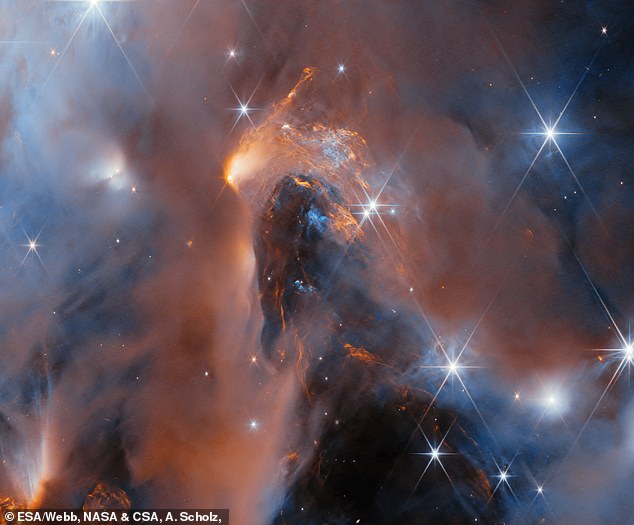Astronomers are revising their understanding of how stars and planets form after the James Webb Space Telescope spotted six new 'rogue' worlds.
These strange planets are free-floating objects that are not tethered to any host star. In most cases,they have been violently chucked out of their celestial neighborhoods by the gravitational force of a nearby object.
But these newly discovered rogue worlds 1,000 light years from Earth are unusual because they appear to have never belonged to a solar system at all - they formed independently of any host star.
Observing them with James Webb already has researchers rethinking everything we know about how stars and planets are born.
'We are probing the very limits of the star forming process,' study lead author Adam Langeveld,an astrophysicist at Johns Hopkins University,said.

JWST's observations have complicated the classification of stars and planets, because rogue worlds resemble gas giants and brown dwarfs - but don't quite fit into either category.
'This is important context for understanding both star and planet formation,' Langeveld said.
The most puzzling of these six rogue worlds is the lightest object with a 'dusty disk' found to date.
A dusty disk - also known as a circumstellar disk - is a circular cloud of gas and dust that rotates around a newly formed star.
This object has a mass roughly equivalent to five Jupiters (or 1,600 Earths). The presence of the disk suggests that the object formed like a star.
'This leads to a question that challenges theories of star formation: how could an object with a mass only a few times that of Jupiter form directly out of a contracting cloud of gas and dust?' Langeveld told DailyMail.com in an email.
What's more,these findings suggest that 'mini' planets and planetary systems could form in the disk of this rogue world,as planets are known to take shape inside circumstellar disks.
'If so,it is likely to resemble Jupiter or Saturn (due to the mass of the object),e.g. with moons and/or rings,rather than a system that is analogous to our solar system with larger planets,' Langeveld said.
'This whole area is uncharted territory,' he added.
'We have not found 'moons' or companions around such light objects outside of our solar system before,so it is important to continue to investigate in the future.'
These new findings complicate the classification of stars and planets because rogue world masses overlap with gas giants and brown dwarfs - but the process of their formation sets them apart.
'Our observations confirm that nature produces planetary mass objects in at least two different ways,' senior author Ray Jayawardhana,an astrophysicist and Provost at Johns Hopkins University,said in the press release.
The first is 'from the contraction of a cloud of gas and dust,the way stars form,' and the second is 'in disks of gas and dust around young stars,as Jupiter in our own solar system did.'
The research team plans to continue surveying these unusual objects and compare them to heavier brown dwarfs and gas giant planets.
'A more complete picture of star and planet birth would help us understand how our own solar system came to be,how our planetary system stacks up in the broader cosmic context,' Jayawardhana told DailyMail.com in an email.

English Morning News: Your Source for Regional News and Corporate
© English Morning News
Privacy Policy